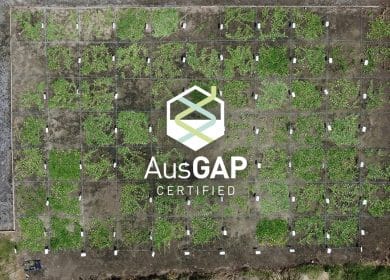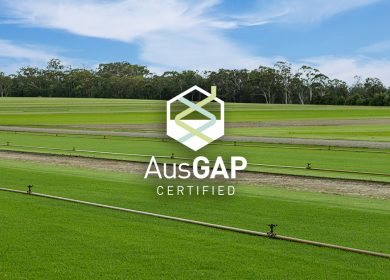The art and science of turfgrass production
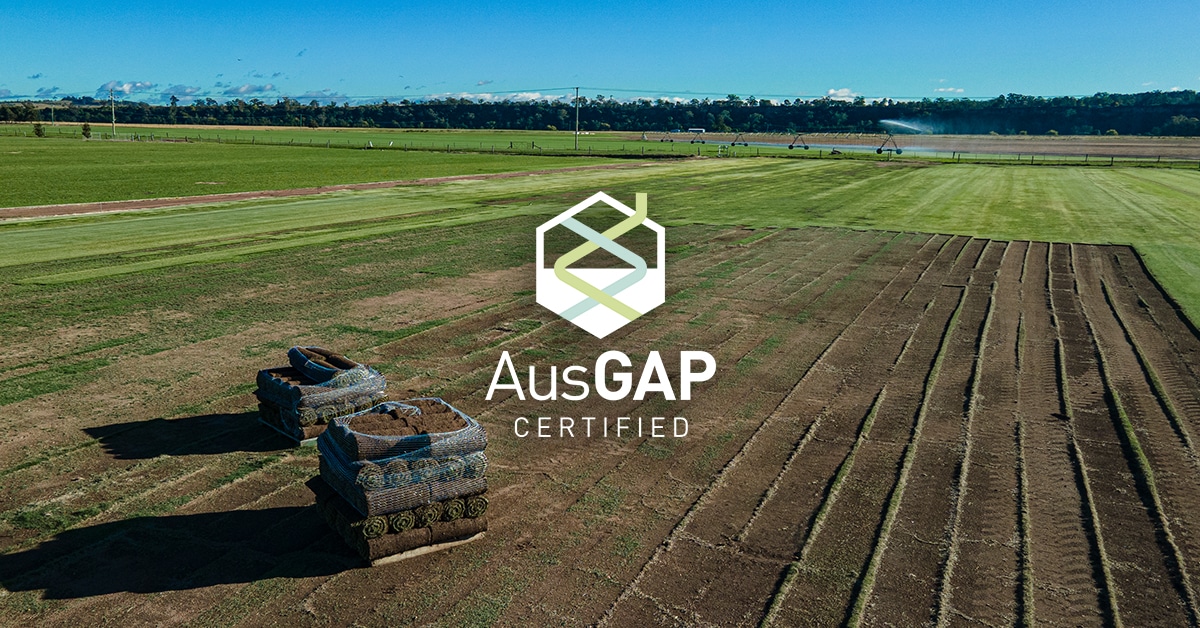
Turfgrass is an essential component of many landscapes, including golf courses, parks, sports fields, and residential lawns. With the growing demand for high-quality turf, the production of turfgrass has become increasingly competitive. As a result, successful turfgrass farming requires a combination of art and science to produce top-quality turf that meets the needs of various customers including selecting the right turfgrass species, soil health, AusGAP certification, and more. Read on to explore the key steps involved in successful turfgrass farming.
Turf farming is a complex process that requires a great deal of knowledge, skill, and resources. There are many variables in turfgrass production and the running of a farm. However, there are a few key elements to ensuring successful production of turf.
Selecting the Right Turfgrass Species for Production
The first step in the process of turf farming is selecting the right turf variety. This involves considering factors such as the location, climate, and intended use of the turf, as well as the desired characteristics of the grass. For example, some grass varieties are more drought or shade tolerant, while others are more suitable for high-traffic areas. Choosing to produce AusGAP certified turfgrass varieties helps ensure that the right turfgrass varieties are grown. AusGAP certified varieties have been researched and trialled in the Australian climate before being available to the public to ensure fit for purpose turfgrasses.
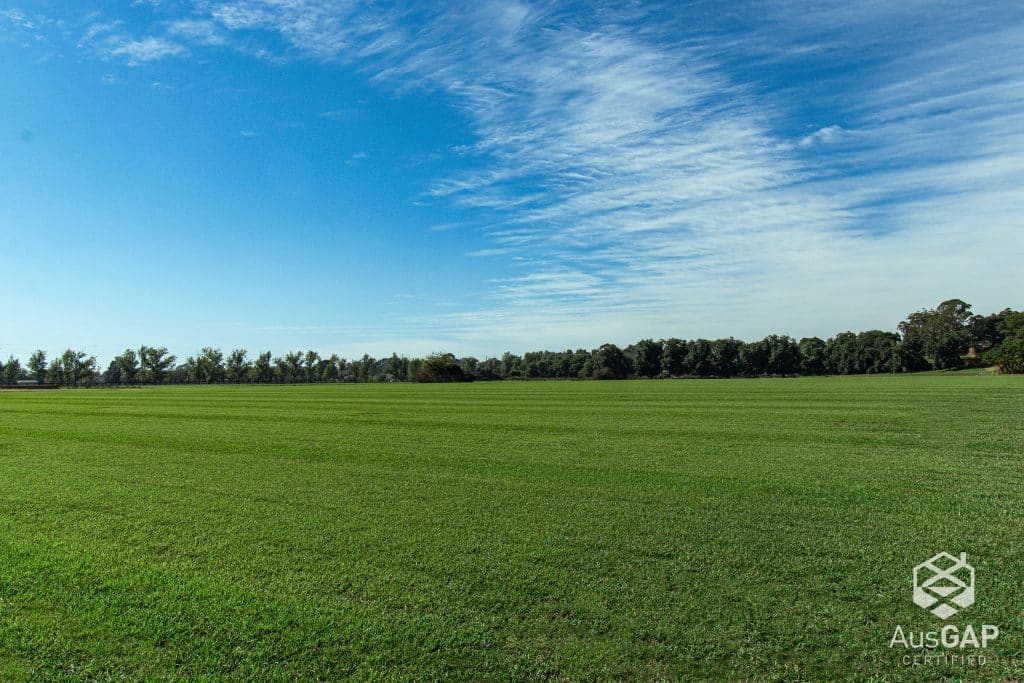
Preparing the Soil and Maintaining Soil Health
Once the right turf variety has been selected, the next step is to prepare the soil. This involves tilling the soil, removing any existing vegetation, and adding organic matter and fertilisers to improve the soil structure. After planting, it is essential to maintain soil health to ensure the growth and health of the turfgrass. This includes regular watering, fertilisation, and mowing.
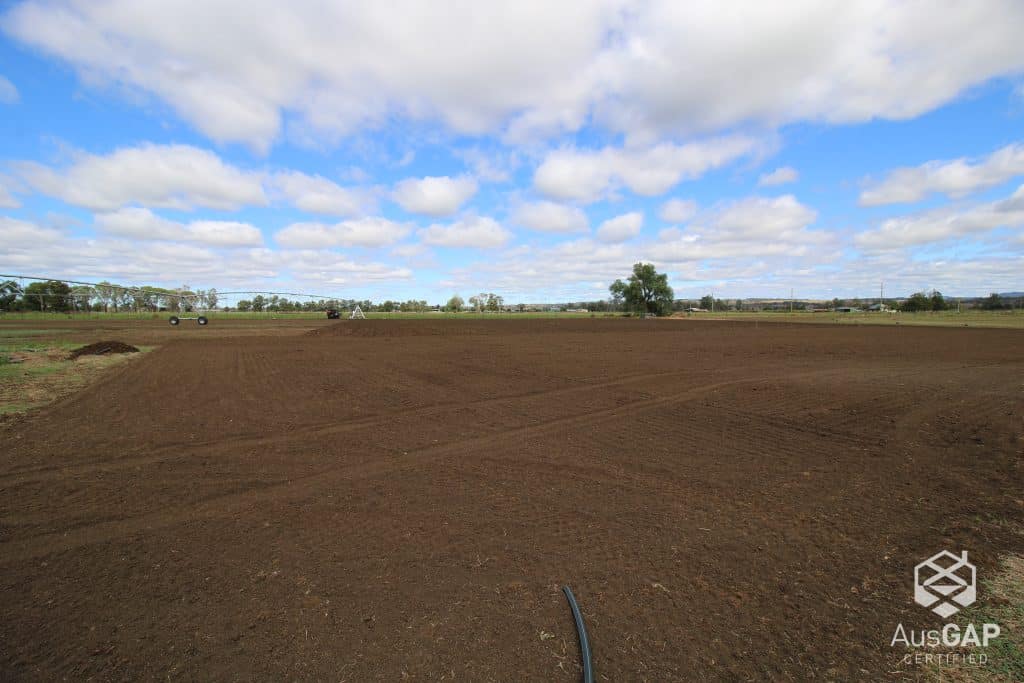
Harvesting and Delivering Turf
The final step in the process of turf farming is harvesting the mature grass. This typically involves cutting the grass into rolls or slabs and packaging it for transport and installation. It is important to follow best practices for harvesting and storage. This ensures that the grass remains in good condition and continues to thrive once it has been installed.
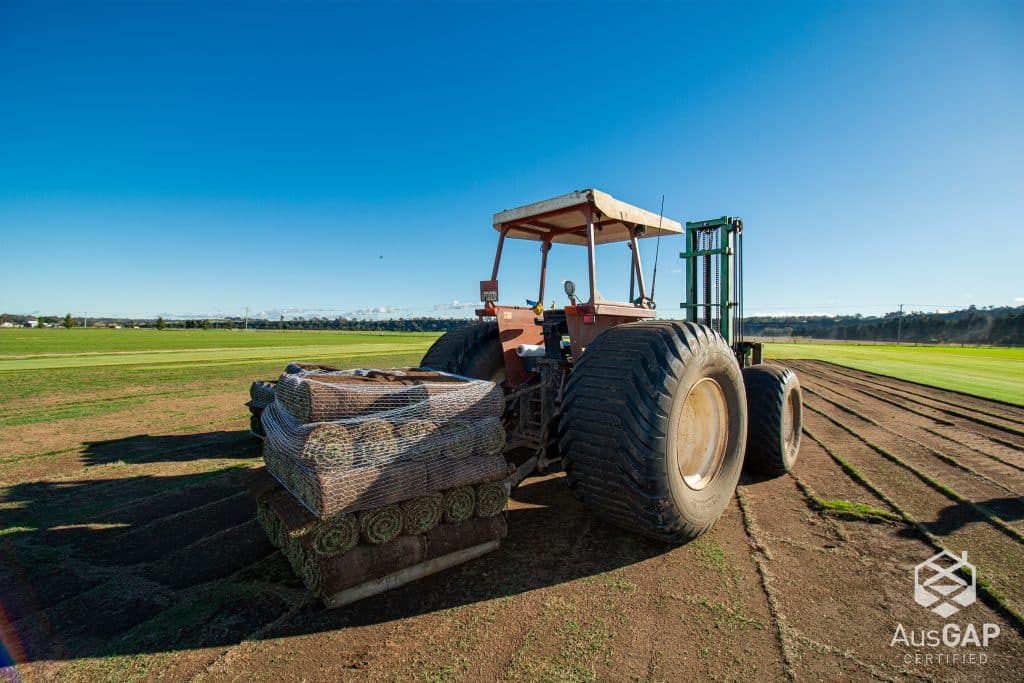
AusGAP’s Role in Turfgrass Production
Turf farming is critical to the landscaping and sporting industries, providing high-quality grass for homes, parks, and sporting fields. To ensure that turf farms are producing grass that meets the highest standards, many have turned to AusGAP. AusGAP provides a rigorous set of guidelines for turf farms to follow while also conducting independent audits of all certified turf paddocks to ensure genetic purity and that turf remains true to type. AusGAP also aid in the research and development in new turfgrasses in Australia. This is to ensure rigorously trialled and proven performers in turfgrass trials remain genetically pure when expanded for production.
The benefits of AusGAP include:
- Improved quality of turf: By adhering to strict guidelines, AusGAP help ensure that turf farms produce high-quality grass that is both aesthetically pleasing and durable.
- Environmental sustainability: AusGAP promote environmentally sustainable practices in turf farming. For example, reducing water usage and utilising reports to ensure fertilisers are not overused, and environmental policies are in place.
- Consumer confidence: Consumers can have confidence in the quality and sustainability of the turf they are purchasing, knowing that it has been produced by an AusGAP accredited turf farm.
- Competitive advantage: By being AusGAP certified, turf farms can differentiate themselves from their competitors. This demonstrates their commitment to producing high-quality, sustainable turf and to bettering to industry.
- Access to technical support: AusGAP provides access to technical support, training, and education. Helping turf farms to continuously improve their practices and stay up to date with the latest developments in the industry.
AusGAP plays a critical role in ensuring that turf farms produce high-quality turf that meets strict international standards. By participating in such programs, turf farms can differentiate themselves from their competitors. Furthermore, it will provide consumers with confidence in their products, and contribute to a more sustainable future for the turf industry.
Turf farming upholds many industries and communities providing green spaces for everyone to enjoy. To successfully produce turf takes much time, effort, and resources and these are only a few key elements in ensuring the best turf possible for the end user. From selecting the right turf variety and preparing the soil, to planting, growing, and harvesting, each step must be executed correctly to produce high-quality turf. By following best practices and utilising the latest technologies, turf farmers can produce grass that is both aesthetically pleasing and durable, and that meets the needs of consumers and the environment.
